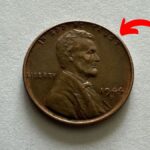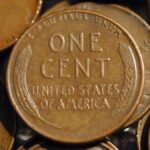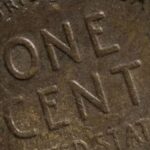The Lincoln Wheat Penny Valued at $7 Million: The 1976 Bicentennial Quarter holds a special place in American numismatic history, commemorating the nation’s 200th anniversary. While most of these quarters have modest value, a rare silver variant with a minting error has achieved legendary status among collectors, commanding an astounding value of $7 million. This particular coin features a colonial drummer on its reverse side, symbolizing America’s revolutionary spirit, while its rarity stems from specific production anomalies that make it unique among millions of similar quarters minted that year.
Understanding Rare Coin Values
The world of rare coins presents remarkable examples of how historical significance, minting errors, and scarcity can create extraordinary value. Beyond the Bicentennial Quarter, several other coins have achieved legendary status in collector circles. The 1933 Double Eagle stands as perhaps the most valuable, selling for $18.9 million in 2021. This coin’s value stems from its fascinating history during the Great Depression, when most examples were recalled and melted by the government to stabilize the economy.
Early American Coinage
Treasures Among early American coins, the 1794 Flowing Hair Silver Dollar holds particular significance as the first silver dollar minted by the United States. Its design features Liberty with flowing hair on the obverse and an eagle on the reverse, representing the young nation’s ideals. In 2013, one of these rare specimens sold for $10 million, establishing it as one of the most valuable silver coins ever sold at auction.
Mysterious Rarities and Limited Editions
The 1913 Liberty Head Nickel exemplifies how extreme rarity can create immense value. With only five known examples in existence, this coin’s unauthorized production has created an enduring mystery that captures collectors’ imaginations. Its 2018 sale for $4.5 million demonstrates how scarcity combined with an intriguing backstory can dramatically increase a coin’s worth.
Diplomatic Coins and Historical Significance
The 1804 Draped Bust Silver Dollar, often called the “King of Coins,” tells a unique story of American diplomacy. Though dated 1804, these coins were actually minted in 1834 specifically as diplomatic gifts for foreign dignitaries. With only eight known specimens, their rarity and historical importance have driven values to extraordinary levels, with one example selling for $3.8 million in 1999.
Modern Marvels in Coin
Collecting Even modern coins can achieve remarkable values when they combine unique characteristics with limited availability. The 2007 Queen Elizabeth II Million Dollar Coin represents a triumph of modern minting technology, containing 100 kilograms of 99.999% pure gold. Initially created as a showcase piece by the Royal Canadian Mint, its combination of size, purity, and rarity led to a $4 million sale in 2010.
Medieval Treasures and Historical Value
The Edward III Florin, dating from 1343, demonstrates how ancient coins can carry immense value. Known as the “Double Leopard,” this medieval English coin exists in only three known examples. Its extreme rarity and historical significance as part of King Edward III’s early gold currency experiment resulted in a remarkable sale price of $6.8 million, making it one of the most valuable medieval coins ever sold.
The Impact on Modern Collecting
These extraordinary coins demonstrate how various factors combine to create numismatic value. Minting errors, historical significance, rarity, and condition all play crucial roles in determining a coin’s worth. The Bicentennial Quarter’s story particularly resonates with modern collectors because it shows how a relatively recent coin can achieve remarkable value due to unique characteristics and production anomalies.
Guidelines for Collectors
For those interested in coin collecting, these valuable specimens offer important lessons. While finding such rare coins is extremely unlikely, understanding what makes them valuable helps collectors identify potentially significant pieces. Key factors to consider include mint marks, production errors, historical context, and preservation quality. Professional authentication is crucial for any potentially valuable coin, as expert verification can confirm genuine characteristics and historical significance.
Future Prospects in Numismatics
The continuing high values achieved by rare coins suggest that numismatics remains a vibrant field for both collectors and investors. While the chances of finding a million-dollar coin in everyday change are minimal, the stories of these rare specimens continue to inspire new generations of collectors. They demonstrate how historical artifacts can preserve both monetary and cultural value, making them fascinating windows into different periods of human history.





